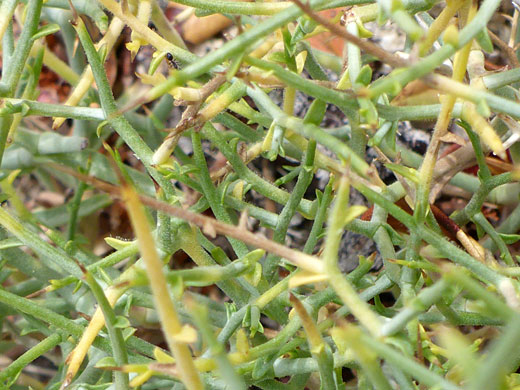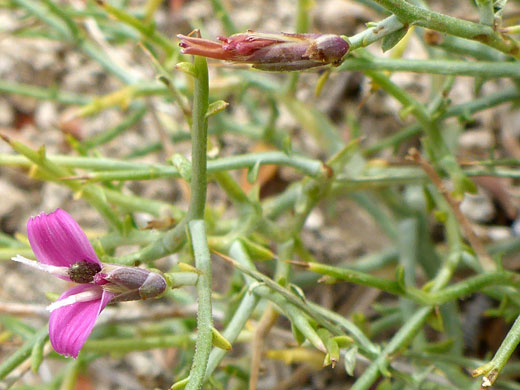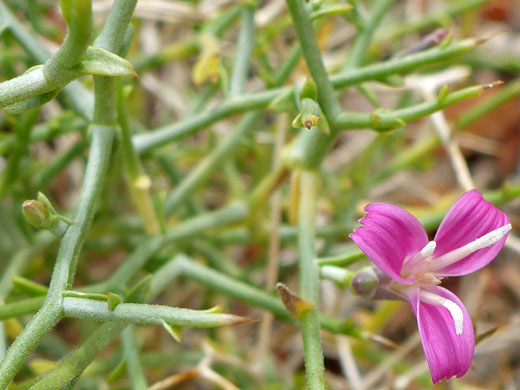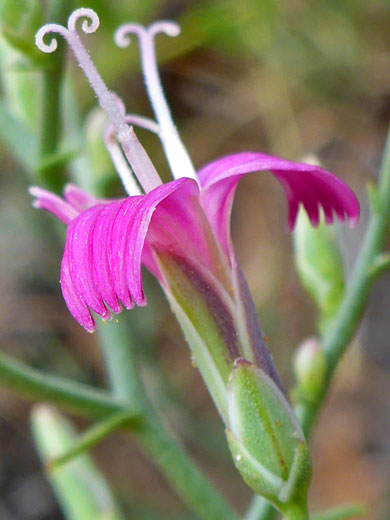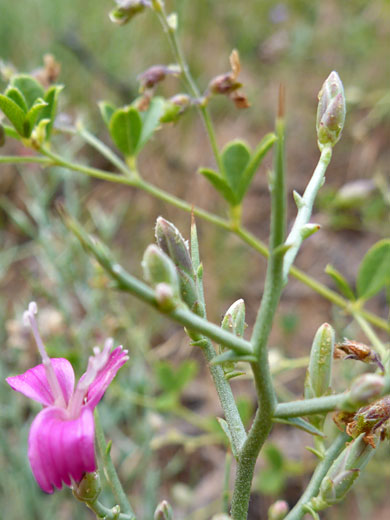Pleiacanthus Spinosus, Thorny Skeletonweed
Plants > Wildflowers > Asteraceae > Pleiacanthus Spinosus
Common name:
Thorny skeletonweed
Family:
Scientific name:
Pleiacanthus spinosus
Synonym:
Stephanomeria spinosa
Main flower color:
Range:
Nevada, all adjacent states, and southwest Montana
Height:
Up to 20 inches
Habitat:
Washes, hillsides, scrub; generally open locations, from 5,000 to 9,500 feet
Leaves:
Lower stem leaves are narrow and linear, up to 3 inches long, while upper leaves are smaller, and bract-like
Season:
July to September
Pleiacanthus spinosus, the only species in this genus, is most widespread in the Sierra Nevada of California, and is also found in scattered areas further east, in Nevada and adjacent states. It is related to the wirelettuce species (stephanomeria), differing in the achene pappus bristles, which are barbed rather than feathery.
Plants are low shrubs, with rigid, much branched stems bearing scale-like leaves and topped by thick thorns. Stems are generally hairless. Flowerheads contain ray florets only (between three and five); ligules are pink, prominently notched at the tip, while the style is white, and relatively thick. Phyllaries, often purplish, are lanceolate in shape, in several series, while at the base of the involucre are several short bractlets; all are hairless.
Plants are low shrubs, with rigid, much branched stems bearing scale-like leaves and topped by thick thorns. Stems are generally hairless. Flowerheads contain ray florets only (between three and five); ligules are pink, prominently notched at the tip, while the style is white, and relatively thick. Phyllaries, often purplish, are lanceolate in shape, in several series, while at the base of the involucre are several short bractlets; all are hairless.
All Contents © Copyright The American Southwest | Comments and Questions | Contribute | Site Map


